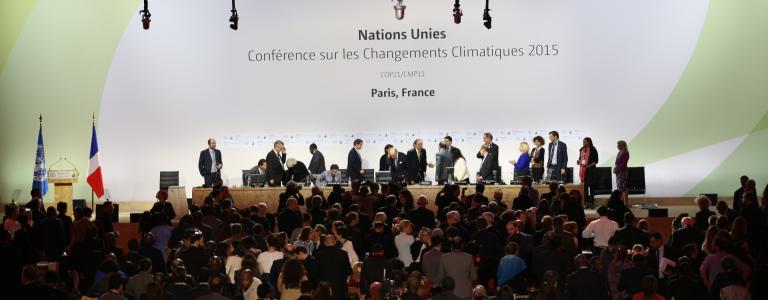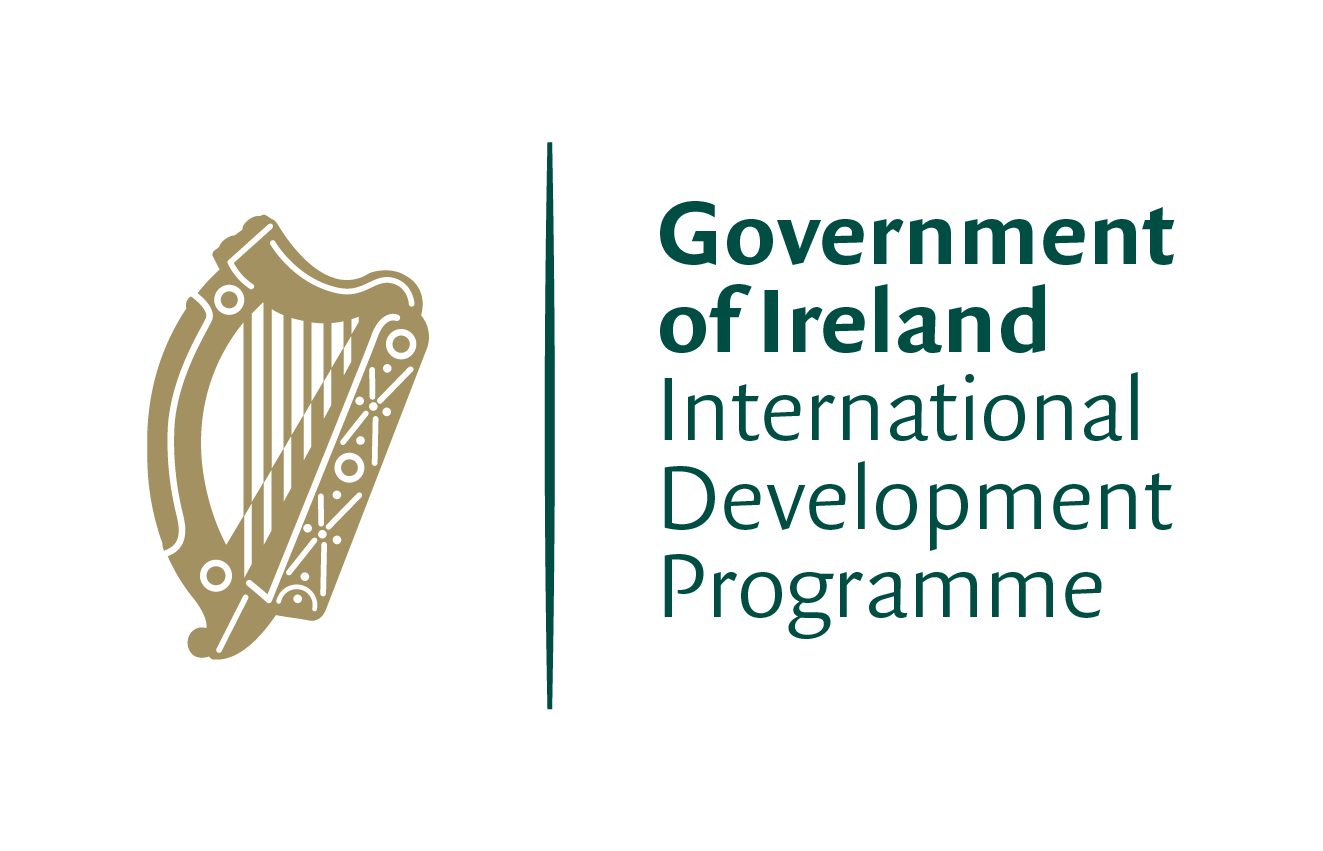Climate Negotiations Glossary
Concise definitions of key terms and acronyms used in the United Nations Framework Convention on Climate Change (UNFCCC) climate change negotiations and beyond.
0 to A
1.5°C: One of the temperature goals of the Paris Agreement. Specifically, parties committed to pursuing efforts to limit the global average temperature increase to 1.5°C above pre-industrial levels (Article 2.1.a). The Intergovernmental Panel on Climate Change published a Special Report on Global Warming of 1.5ºC and showed that climate impacts increase with every increment of warming. (more info)
2°C: One of the temperature goals of the Paris Agreement. Specifically, parties committed to holding the increase in the global average temperature to well below 2°C above pre-industrial levels (Article 2.1.a). (more info)
AAU or Assigned amount unit: The total amount of greenhouse gasses (GHGs) each Annex B country is permitted to emit during the initial commitment period of the Kyoto Protocol is the country’s assigned amount. This amount is divided into units called AAUs.
ABU or Argentina, Brazil, and Uruguay: One of the negotiation blocks in the climate negotiations.
AC or Adaptation Committee: The AC is a constituted body that was established in 2010. Its functions are providing technical support to parties; considering adaptation information communicated by parties; providing recommendations for consideration by the COP; sharing information; and promoting synergy and strengthening engagement with national, regional, and international organizations. (more info)
Accreditation: The process through which an organization is officially admitted to the UNFCCC process as an observer organization.
ACE or Action for Climate Empowerment: A process aimed at empowering all members of society to engage in climate action. It builds on climate change education and public awareness, training, public participation, public access to information, and international cooperation on these issues. In 2022, parties adopted a 4-year ACE action plan that sets out short-term and time-bound activities. The process offers the broader climate community and actors in various sectors an opportunity to discuss strategies for mainstreaming climate action in society. (more info)
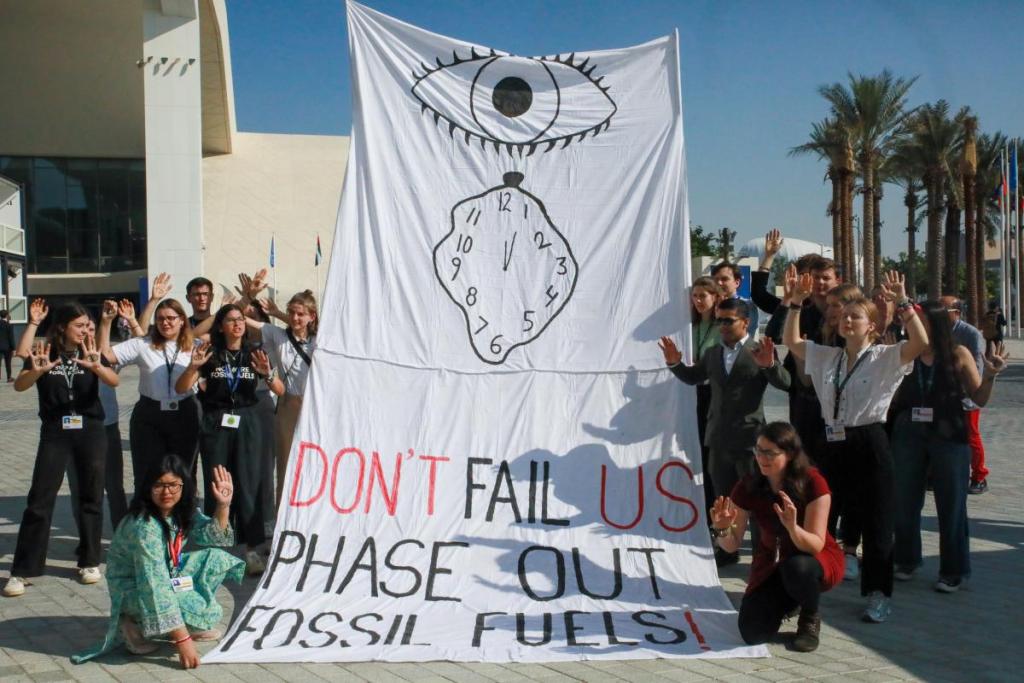
Action: Another term for civil society protests or demonstrations.
Ad hoc: A Latin term that means “for this purpose.” It is usually used to designate a committee or working group created to address a specific issue in a time-bound rather than open-ended manner. Ad hoc working groups in the climate negotiations have, for example, been tasked with discussing future commitments under the Kyoto Protocol, developing what would become the Paris Agreement, preparing for the Paris Agreement’s entry into force, and developing a new collective quantified goal on climate finance before 2025.
Adaptation: The process of adjusting to actual or expected climate change impacts. It most often aims to minimize potential damage but can also serve to leverage beneficial opportunities. Within the UNFCCC, there are a number of workstreams and constituted bodies that address matters related to adaptation. (more info)
AF or Adaptation Fund: The AF was established in 2001 under the Kyoto Protocol to finance adaptation projects in developing countries that are parties to the Protocol and are particularly vulnerable to the adverse effects of climate change. It is financed largely by developed countries and private donors. It also gets a share of the proceeds of the Protocol’s Clean Development Mechanism amounting to 2% of the Certified Emission Reductions issued under the Mechanism. Since 2019, the AF has also been serving the Paris Agreement. Parties decided that once the share of proceeds from the Paris Agreement’s Article 6.4 mechanism become available, the AF shall exclusively serve the Paris Agreement. (more info)
Agenda item: An agenda item is a distinct matter to be considered at a meeting. Some agenda items are very narrow in focus, while others can encompass many sub-items.
AGN or African Group of Negotiators: One of the negotiation blocks in the climate negotiations.
AILAC or Independent Association of Latin America and the Caribbean: One of the negotiation blocks in the climate negotiations. Its members include Chile, Colombia, Costa Rica, Guatemala, Honduras, Panama, and Peru. (more info)
AIM or Arrangements for Intergovernmental Meetings: An agenda item in the climate negotiations that addresses process-related questions, such as streamlining meeting agendas and fostering the participation of observers from developing countries.
ALBA or Bolivarian Alliance for the Peoples of our America: One of the negotiation blocks in the climate negotiations. Its members are Antigua and Barbuda, Bolivia, Cuba, Dominica, Grenada, Nicaragua, Saint Kitts and Nevis, Saint Lucia, Saint Vincent and the Grenadines, and Venezuela.
Annex I parties: Countries listed in Annex I to the UNFCCC. These include all the developed countries that were members of the Organisation for Economic Co-operation and Development (OECD) in 1992 and a number of countries with economies in transition (the Russian Federation, the Baltic States, and several Central and Eastern European states). Under Articles 4.2 (a) and 4.2 (b) of the UNFCCC, Annex I parties commit to returning individually or jointly to their 1990 levels of GHG emissions by the year 2000. (more info)
Annex II parties: Countries listed in Annex II to the UNFCCC. These are the OECD member countries listed in Annex I to the UNFCCC, excluding those countries with economies in transition (as of 1992). Annex II parties are required to provide financial resources to enable developing countries to undertake emissions reduction activities under the UNFCCC and to help them adapt to the adverse effects of climate change. They also have to promote the development and transfer of environmentally friendly technologies to parties with economies in transition and developing countries.
AOSIS or Alliance of Small Island States: One of the negotiation blocks in the climate negotiations. Its members are Antigua and Barbuda, the Bahamas, Barbados, Belize, Cabo Verde, Comoros, the Cook Islands, Cuba, Dominica, the Dominican Republic, the Federated States of Micronesia, Fiji, Grenada, Guinea Bissau, Guyana, Haiti, Jamaica, Kiribati, the Maldives, Mauritius, Nauru, Niue, Palau, Papua New Guinea, the Marshall Islands, Saint Kitts and Nevis, Saint Lucia, Saint Vincent and the Grenadines, Samoa, Saõ Tomé and Príncipe, Seychelles, Singapore, theSolomon Islands, Suriname, Timor Leste, Tonga, Trinidad and Tobago, Tuvalu, and Vanuatu. (more info)
Arab Group: One of the negotiation blocks in the climate negotiations. Its members are Algeria, Bahrain, Comoros, Djibouti, Egypt, Iraq, Jordan, Kuwait, Lebanon, Libya, Morocco, Mauritania, Oman, Palestine, Qatar, Saudi Arabia, Somalia, Sudan, Syria, Tunisia, the United Arab Emirates, and Yemen.
Article 2.1.c: One of the objectives of the Paris Agreement. The Paris Agreement aims to strengthen the global response to the threat of climate change, in the context of sustainable development and efforts to eradicate poverty (Article 2). To do so, it aims to limit the increase in global average temperature (Article 2.1.a) to strengthen adaptive capacity (Article 2.1.b) and make finance flows consistent with a pathway to low-GHG emissions and climate-resilient development (Article 2.1.c). In 2022, parties launched a dedicated dialogue process to exchange views on and enhance understanding of the scope of Article 2.1.c and its complementarity with Paris Agreement Article 9 (which, among other things, specifies that developed countries shall provide financial resources to assist developing countries and encourages other parties to provide or continue to provide such support voluntarily). (more info)
Article 6: The Paris Agreement article that recognizes that some parties choose to pursue voluntary cooperation in the implementation of their nationally determined contributions (NDCs). (more info)
Article 6.2: The Paris Agreement article that provides a framework for direct cooperation between countries and involves the use of internationally transferred mitigation outcomes (ITMOs) whereby the emission reductions achieved in one country are accounted toward the NDC of another country. Parties are still negotiating the exact modalities for this process, especially how to avoid double counting and ensure overall mitigation of global emissions. In doing so, they build on experience with market mechanisms established under the Kyoto Protocol.
Article 6.4: The Paris Agreement article that establishes a new international carbon crediting mechanism to be overseen by a dedicated Supervisory Body. Various kinds of actors can request for their projects to be included in the mechanism’s registry, provided the projects are approved by the country in which they are being implemented and by the Supervisory Body. The emission reduction credits resulting from these projects can, in turn, be bought not only by countries but also by businesses and other actors, including individuals. A share of proceeds of 5% of these credits will flow to the Adaptation Fund, and 2% of the credits will be cancelled rather than sold in order to deliver overall mitigation of global emissions. Parties are still negotiating the exact modalities that will govern the mechanism. In doing so, they build on experience with market mechanisms established under the Kyoto Protocol and also lessons learned from the voluntary carbon market. (more info)
Article 6.8: The Paris Agreement article that relates to cooperative approaches to implementing mitigation and adaptation actions and where the outcomes of the actions, such as emission reductions achieved, are not traded. Parties established a dedicated work programme to discuss what measures would be considered non-market approaches and how to support their funding and facilitate their replication. (more info)
Article 9.5: The Paris Agreement article stipulating that developed countries shall biennially communicate indicative quantitative and qualitative information related to the provision of financial resources to assist developing countries with respect to mitigation and adaptation. It also states that other parties that provide resources are encouraged to voluntarily communicate such information biennially. This is commonly referred to as ex-ante reporting on climate finance and aims to enhance predictability. (more info)
Assigned Amount: Total amount of GHGs each Annex B country is permitted to emit during the initial commitment period of the Kyoto Protocol. This total amount is divided into AAUs.
B to D
Badge: Only registered participants can attend climate conferences. When they first arrive at the venue, they are given a badge that they have to wear at all times. The badges feature bar codes that are scanned when participants enter and exit the venue. The badges also feature a colour line that indicates whether the participant is from a party (pink), intergovernmental organization (dark blue), non-governmental organization (yellow), media (orange), or the Secretariat (light blue). Parties’ heads of delegation have a red line on their badge.
BASIC or Brazil, South Africa, India, and China: One of the negotiation blocks in the climate negotiations.
BINGO or Business and Industry Non-Governmental Organizations: One of the UNFCCC’s nine observer constituencies.
Blue zone: A phrase that refers to the UN-organized conference space in which the negotiations, official side events, and press conferences take place. Only accredited and registered participants can enter this space.
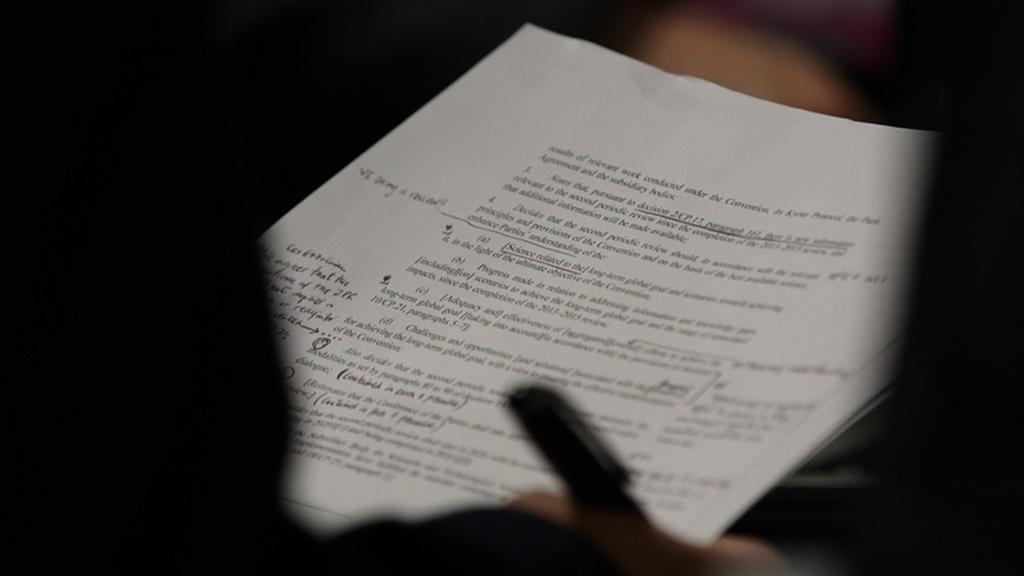
Brackets: A typographical symbol to indicate parts of a negotiation text that have yet to be agreed on. Square brackets can be put around individual letters, words, sentences, or paragraphs; sometimes an entire decision text is put in square brackets to signal that nothing has yet been agreed. There can be multiple square brackets nested within each other when individual parts of an un-agreed sentence are still up for discussion. There can also be consecutive square brackets within a sentence that signal the various alternatives for an individual word or section of the sentence.
Bridging proposal: A suggestion that aims to overcome diverging positions in the negotiations.
BTR or Biennial Transparency Reports: A key element of the Paris Agreement’s Enhanced Transparency Framework. BTRs include information on national inventory reports, progress toward NDCs, and financial, technical, and capacity-building support provided/received, among others. Parties are required to submit BTRs every 2 years, with the first submission due December 31, 2024, except for Small Island Developing States (SIDS) and least developed countries (LDCs), who may submit BTRs at their discretion. The submitted BTRs will go through a technical expert review process, and a facilitative, multilateral consideration of progress will also be conducted for each party. (more info)
Bunker fuels: A phrase that refers to emissions from fuel used for international aviation and maritime transport. Cooperation with the International Civil Aviation Organization (ICAO) and the International Maritime Organization (IMO) is channelled through the Subsidiary Body for Scientific and Technological Advice. (more info)
Bureau of the COP, CMP, and CMA: The Bureau provides advice and guidance regarding the ongoing work under the UNFCCC, the Kyoto Protocol, and the Paris Agreement, including on the organization of their sessions and the operation of the Secretariat. During meetings, the Bureau is mainly responsible for assisting with process management, including by examining parties’ credentials, reviewing requests for observer accreditation, presiding over sessions, and undertaking consultations on behalf of the President. (more info)
CAN or Climate Action Network: A large network of civil society organizations. It publishes a daily newsletter (ECO) during UNFCCC meetings, commenting on the negotiations. It also speaks on behalf of the ENGO Constituency alongside the Global Campaign to Demand Climate Justice. (more info)
Capacity building: The process of developing the skills and structures needed to implement an agreement or specific measures. In the climate context, the focus lies on supporting capacity building in developing countries. The importance of capacity building is, for example, recognized in Paris Agreement Article 11, and there are various bodies and processes under the UNFCCC that focus on capacity building. (more info)
Cartagena Dialogue: A regular dialogue process established in the aftermath of COP 15 in Copenhagen to offer a space for candid discussions among various developed and developing countries that support ambitious multilateral climate action.
CBDR-RC or Common but differentiated responsibilities and respective capabilities: A principle that asserts countries’ common responsibility for addressing climate change while at the same time acknowledging different levels of responsibility depending on the extent to which countries have contributed to the problem and their capacity to take action. This is a key principle in the climate change negotiations but is also recognized in other multilateral environmental agreements.
CDM or Clean Development Mechanism: A mechanism established under the Kyoto Protocol that allows Annex B parties (developed countries) to finance mitigation projects in developing countries in exchange for certified emission reduction credits that count toward meeting their emission reduction targets under the Protocol. The idea is that this allows for more cost-effective mitigation while still delivering overall mitigation results. A share of 2% of the proceeds from the credits flows into the Adaptation Fund. Lessons learned from the CDM inform the operationalization of market approaches under the Paris Agreement’s Article 6, particularly the mechanism established under Article 6.4. (more info)
CfRN or Coalition for Rainforest Nations: One of the negotiation blocks in the climate negotiations. Its members are Argentina, Bangladesh, Belize, Bolivia, Botswana, Brazil, Cambodia, Cameroon, Central African Republic, China, Costa Rica, the Democratic Republic of the Congo, Dominica, Dominican Republic, Ecuador, Equatorial Guinea, Fiji, Gabon, Ghana, Guatemala, Guyana, Honduras, India, Jamaica, Kenya, Lao People’s Democratic Republic, Lesotho, Liberia, Madagascar, Malawi, Malaysia, Mali, Mozambique, Namibia, Nicaragua, Nigeria, Pakistan, Papua New Guinea, Paraguay, the Republic of Congo, Indonesia, Saint Lucia, Samoa, Sierra Leone, Singapore, Solomon Islands, South Africa, Sudan, Suriname, Thailand, Uganda, Uruguay, Vanuatu, Vietnam, and Zambia. (more info)
CGE or Consultative Group of Experts: A constituted body established in 1999 to support developing countries in fulfilling their reporting requirements under the UNFCCC and now also under the Paris Agreement’s Enhanced Transparency Framework. The CGE also provides technical advice to the Secretariat on training implementation for technical expert review teams. Its current mandate runs until the end of 2026. (more info)
Chair: The person that leads a meeting.
Chapeau: Another word for the preamble/introductory provisions of a decision. It provides context, points to previous related decisions and principles, and guides the interpretation of the substantive parts/body of the text.
Closed-door meeting: A meeting to which access is restricted, usually to parties only.
CMA or Conference of the Parties serving as the meeting of the Parties to the Paris Agreement: The CMA is the governing body of the Paris Agreement. It is where all parties to the agreement come together to review its implementation and adopt decisions that aim to promote its effective implementation. The CMA meets every year alongside the COP and the CMP. (more info)
CMP or Conference of the Parties serving as the meeting of the Parties to the Kyoto Protocol: The CMP is the governing body of the Kyoto Protocol. It is where all parties to the Protocol come together to review its implementation and adopt decisions that aim to promote its effective implementation. The CMP meets every year alongside the COP and the CMA. Parties to the UNFCCC that are not parties to the Kyoto Protocol are able to participate in CMP meetings as observers but cannot engage in decision making. (more info)
Coalition: A group of like-minded parties that make joint statements in the negotiations.
Co-Chair: In the climate negotiations, contact group discussions are moderated by two Co-Chairs, one from a developing country and one from a developed country. This role also exists in various work programmes and dialogue processes.
Compliance: Whether and to what extent countries meet their commitments.
Consensus: The mode through which most decisions are adopted at the UNFCCC. It is up to the presiding officer to determine whether there is consensus. In practice, consensus is understood as broad agreement, but not necessarily unanimous support. Presiding officers may determine there is consensus unless a party registers a formal objection.
Constituencies: Many non-state actors engage in the UNFCCC process as observers. Over time, they have organized themselves into groups and the UNFCCC has officially recognized nine such constituencies: business and industry NGOs (BINGO), environmental NGOs (ENGO), farmers and agricultural NGOs (Farmers), Indigenous Peoples organizations (IPO), local government and municipal authorities (LGMA), research and independent NGOs (RINGO), trade union NGOs (TUNGO), the women and gender constituency (WGC), and children and youth NGOs (YOUNGO). Constituencies have their own focal points that facilitate the exchange of information with the Secretariat. Constituencies get to make statements in Plenary (usually after statements by party coalitions and individual parties), get special consideration in the allocation of seats in meetings with restricted access, and are invited to intersessional meetings, such as those of constituted bodies. The UNFCCC’s constituency system mirrors the nine Major Groups identified as stakeholders in the outcome of the Rio+20 Summit. (more info)
Contact Group: A group established to conduct negotiations on a specific agenda item or sub-item. All parties may attend, and meetings are open to observers. At times, contact groups decide to convene informal consultations to advance the negotiations. In this case, usually only the first and last negotiation session on the respective agenda item is convened in a contact group setting while the bulk of the negotiations happens in informal consultations, which may be restricted to parties only. However, the distinction between a contact group and informal consultations is increasingly blurred, as observers have been allowed to join the vast majority of informal consultations in the past few years. Contact group discussions are led by two Co-Chairs, one from a developing country and one from a developed country. When discussions continue in informal consultations, these same representatives are referred to as Co-Facilitators.
Convention: The UN Framework Convention on Climate Change. (more info)
Coordination meeting: Individual delegations and coalitions usually meet once a day to discuss progress in the negotiations and coordinate their negotiation strategy.
COP or Conference of the Parties: The COP is the decision-making body of an international agreement—in this case, the UNFCCC. It is where all parties to the UNFCCC come together to review its implementation and adopt decisions that aim to promote its effective implementation. Unless decided otherwise, the COP meets once a year for two weeks, typically in November/December. By default, the COP would meet in Bonn, Germany, where the UNFCCC Secretariat is located, but in practice, it takes place in the country that presides over the specific COP meeting. (more info)
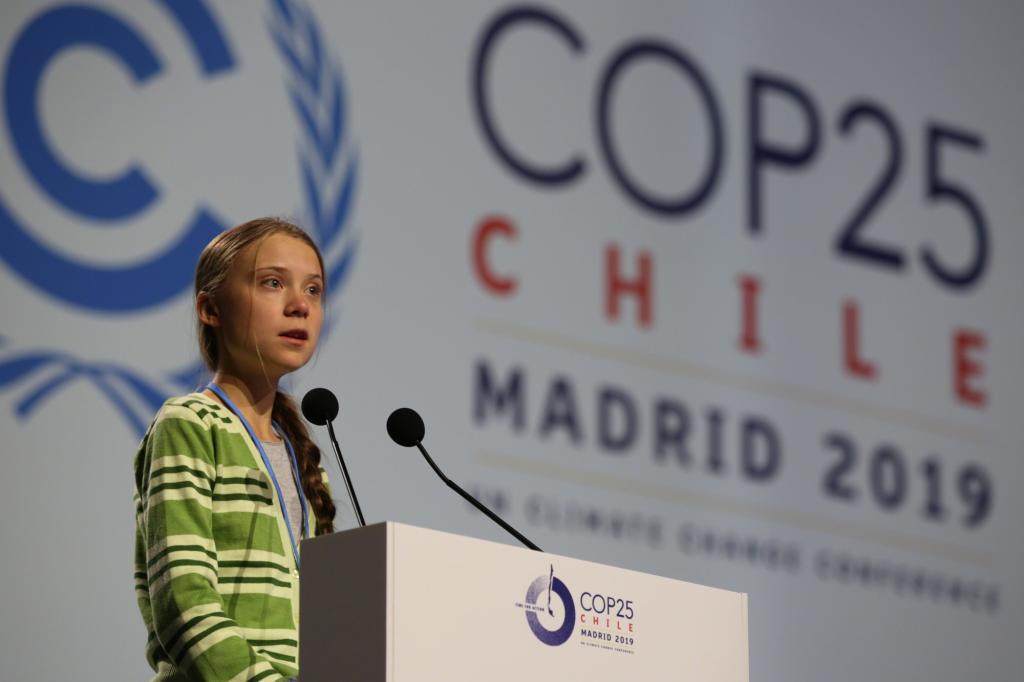
COP Presidency: Typically, the COP Presidency is the country that hosts a COP. It is responsible for much of the logistics related to the meeting venue, liaising with governments and other stakeholders to facilitate a successful outcome to the meeting (both ahead and during the COP), chairing much of the negotiations, and ensuring the rules of procedure are upheld. The COP Presidency rotates among the five UN regional groups (Africa, Asia-Pacific, Eastern Europe, Latin America and the Caribbean, and Western Europe and Others). Regional groups hold consultations to determine which country from their region will make an offer to host a conference, and the COP ultimately decides to accept such hosting offers. (more info)
Cover decision: A decision not tied to any specific agenda item that is drafted without a mandate. They can span any sort of issue that parties want to address. COP 25, COP 26, and COP 27 each adopted such a cover decision (the Chile Madrid Time for Action, the Glasgow Climate Pact, and the Sharm El Sheikh Implementation Plan, respectively).
Credentials: Document certifying a participant’s affiliation to a specific organization.
CRP or Conference Room Paper: A type of in-session document containing new proposals or provisional outcomes that is usually only available during the specific meeting rather than being permanently archived on the UNFCCC website.
CTCN or Climate Technology Centre and Network: The UNFCCC Technology Mechanism’s “implementation arm.” It provides technical assistance at the request of developing countries and fosters access to information and collaboration among climate technology stakeholders. The CTCN is located in Copenhagen, Denmark, hosted by the UN Environment Programme in collaboration with the UN Industrial Development Organization, and supported by 11 partner institutions with expertise in climate technologies. (more info)
DCJ or Global Campaign to Demand Climate Justice: Network of climate and human rights organizations that speaks on behalf of the ENGO Constituency alongside the Climate Action Network. (more info)
Declaration: In addition to the outcomes of the multilateral negotiation process, governments and other stakeholders often use climate change conferences as a platform to launch and mediatize political declarations on issues such as deforestation, methane, health, or food systems. These are not official UNFCCC outcomes and there typically is no process to track the extent to which stakeholders follow through with the commitments set out in these declarations. They nevertheless serve to coalesce actors around issues of common interest and raise the profile of these issues.
Delegate: A member of a delegation participating in a given meeting. The term is used for party representatives and representatives of observer organizations.
Delegation: A team of people representing the same party or observer organization.
Developed country: A term used in the Paris Agreement to differentiate between countries with different types of commitments, especially in terms of support. Unlike the UNFCCC and the Kyoto Protocol, which featured specific lists (as annexes) to distinguish countries with specific commitments, the Paris Agreement does not specify a definition for or provide a list of countries that would be considered to be “developed.” This leaves much room for interpretation and relies on countries’ self-identification. In practice, only Annex B countries have so far engaged in the Paris Agreement process as developed countries, irrespective of development indicators such as GDP per capita.
Developing country: A term used in the Paris Agreement to differentiate between countries with different types of commitments, especially in terms of support. Unlike the UNFCCC and the Kyoto Protocol, which featured specific country lists to distinguish countries with specific commitments, the Paris Agreement does not specify a definition for or provide a list of countries that would be considered “developing.” This leaves much room for interpretation and relies on countries’ self-identification. In practice, non-Annex B countries have so far engaged in the Paris Agreement processes as developing countries, irrespective of development indicators such as GDP per capita.
Draft decision: Decisions are only adopted in plenary. Before that point, they are considered to be “draft” decisions as changes could still be made in plenary.
Drafting group: An informal group established to develop concrete textual proposals; it is usually restricted to parties only.
E to H
ECO: A civil society newsletter published daily at UNFCCC events that reflect the Climate Action Network’s perspective on the negotiations. (more info)
EIG or Environmental Integrity Group: One of the negotiation blocks in the climate negotiations. Its members are Mexico, Liechtenstein, Monaco, the Republic of Korea, Switzerland, and Georgia. It is the only coalition comprising both developed and developing countries.
ENB or Earth Negotiations Bulletin: An independent reporting service that covers various environmental processes. The ENB provides daily coverage of UNFCCC negotiations and publishes a summary and analysis after each meeting. It is the de facto record of multilateral environmental negotiations since 1992, and its reports are available for free on the ENB website. ENB also provides photographic coverage that is free to reuse with appropriate citation. (more info)
ENGO or Environmental NGOs: One of the UNFCCC’s nine observer constituencies. In practice, two groups take the floor on behalf of the ENGO constituency: the Climate Action Network and Demand Climate Justice.
ETF or Enhanced Transparency Framework: The Paris Agreement’s reporting framework. Reporting requirements under the ETF are more fine grain than under the UNFCCC. The transition to reporting under the ETF is therefore challenging, especially for developing countries that lack institutional and monitoring capacity. In recognition of this, the ETF provides flexibility to those developing countries that need it. In 2024, parties to the Paris Agreement have to submit their first biennial transparency reports, which are the cornerstone of the ETF. This will be an important milestone and provide an opportunity to reflect on lessons learned. (more info)
ETS or Emissions trading scheme: A market-based system to reduce GHG emissions. A “cap” (or limit) is put on the amount of GHGs that can be emitted in a given year. Actors subject to this system have to ensure they stay below a certain emission threshold or buy emission rights from others who have managed to emit less than their threshold. The price for these emission rights is thus determined on the basis of supply and demand, which is why this is also called a “cap and trade system.” Typically, this cap is lowered over time, making emission rights scarcer and thus leading to an increase in their price so as to progressively incentivize low-GHG innovation.
Executive Secretary: The head of the UNFCCC Secretariat.
Farmers: One of the UNFCCC’s nine observer constituencies.
Flag: A plastic tag featuring a delegation’s name. In plenary, there is a fixed, alphabetical seating arrangement, and flags indicate which seats are reserved for specific delegations. In other negotiation rooms, delegates can decide themselves where to sit and have to pick up their flag upon entering the room. Flags are used to signal a delegate’s wish to take the floor/speak. There are no actual flags or logos of any kind.
FM or Financial Mechanism: The UNFCCC established a Financial Mechanism to provide financial resources to developing countries to implement climate action. The FM also serves the Kyoto Protocol and the Paris Agreement. Its operating entities are the Global Environment Facility (GEF) and the Green Climate Fund (GCF), and it also includes the Special Climate Change Fund (SCCF), Least Developed Countries Fund (LDCF), Adaptation Fund, and, once it is operationalized, a fund for responding to loss and damage. (more info)
FoC or Friends of the Chair: An informal group invoked by a Chair to advance negotiations on a thorny issue.
Focal point: A designated contact person for a specific delegation or issue.
Fossil fuels: Hydrocarbon-containing materials such as coal, oil, and natural gas. Typically burned for energy production, they release large quantities of GHGs into the atmosphere and are, by far, the largest contributor to climate change.
FWG or Facilitative Working Group of the Local Communities and Indigenous Peoples Platform: A constituted body established in 2018 to implement the functions of the Local Communities and Indigenous Peoples Platform. Half of the members of the FWG are representatives of parties and half are representatives from Indigenous Peoples organizations. (more info)
G-77/China: One of the negotiation blocks in the climate negotiations. Established in 1964 in the context of the first session of the United Nations Conference on Trade and Development, it represents all developing countries. Typically, developing countries first make a joint statement through the G-77/China and then the smaller negotiation blocks take the floor. (more info)
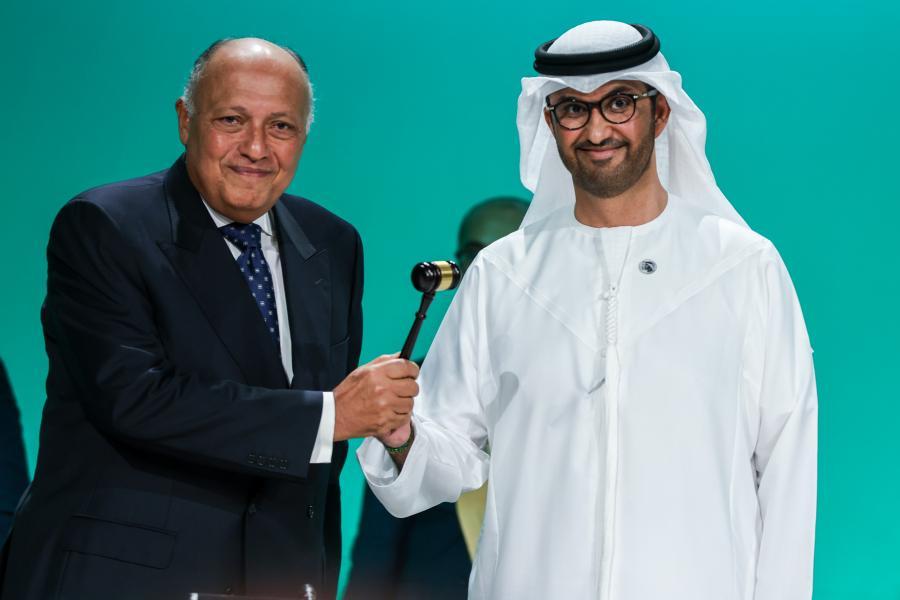
Gavel: A little hammer with which presiding officers officially declare adoption of a decision or call delegations to order.
GCF or Green Climate Fund: Established in 2010 with a view to being the main channel for the delivery of USD 100 billion per year in climate finance. It is one of the operating entities of the UNFCCC’s Financial Mechanism and also serves the Paris Agreement. The GCF is mandated to invest 50% of its resources into mitigation and 50% into adaptation in grant equivalent terms. At least half of its adaptation resources must be invested in the SIDS, LDCs, and African States. (more info)
GEF or Global Environment Facility: The GEF was established in 1991. Various multilateral environmental agreements use it to channel finance to support developing countries in implementing environmental protection measures. It is one of the operating entities of the UNFCCC’s Financial Mechanism. (more info)
GGA or Global Goal on Adaptation: The Global Goal on Adaptation (GGA) was established through Paris Agreement Article 7.1 as enhancing adaptive capacity, strengthening resilience and reducing vulnerability to climate change, with a view to contributing to sustainable development and ensuring an adequate adaptation response in the context of the 2°C/1.5°C temperature goals. To make the GGA more actionable and facilitate monitoring, evaluation, and learning on adaptations, parties launched a 2-year work programme that led to the adoption of the GGA Framework in 2023, which includes thematic and dimensional targets. Building on this, parties launched another 2-year work programme to advance outstanding work on indicators. A challenge in this endeavour is ensuring that the set of indicators adequately captures the targets, is manageable in practice (including in resource-constrained countries), and balances the need to fit varying local contexts with the need to gain a global overview. (more info)
GHGs or Greenhouse gases: Gases that trap infrared radiation from the Earth’s surface, contributing to global warming. Carbon dioxide is the most abundant GHG, but others are methane, nitrous oxide, ozone, chlorofluorocarbons, hydrochlorofluorocarbons, hydrofluorocarbons, perfluorocarbons, and sulphur hexafluoride.
Governing body: A decision-making body of an agreement. In the climate process, there are three governing bodies: the COP for the UNFCCC, the CMP for the Kyoto Protocol, and the CMA for the Paris Agreement. (more info)
Green zone: A phrase that refers to the conference space managed by the host country (as opposed to the blue zone managed by the UNFCCC Secretariat), which serves as a platform to engage with civil society and the private sector.
Grupo Sur: One of the negotiation blocks in the climate negotiations. Its members are Argentina, Brazil, Paraguay, and Uruguay.
GST or Global Stocktake: A process for taking stock of collective progress made in implementing the Paris Agreement and reaching its objectives. The exercise, which combines a technical and a political phase, takes place every five years. The first GST concluded in 2023, and its outcome is intended to inform the next round of nationally determined contributions to be put forward by 2025. The finding is unequivocal: we are not on track to limit global warming to 1.5°C, and the window for meaningful change is closing. (more info)
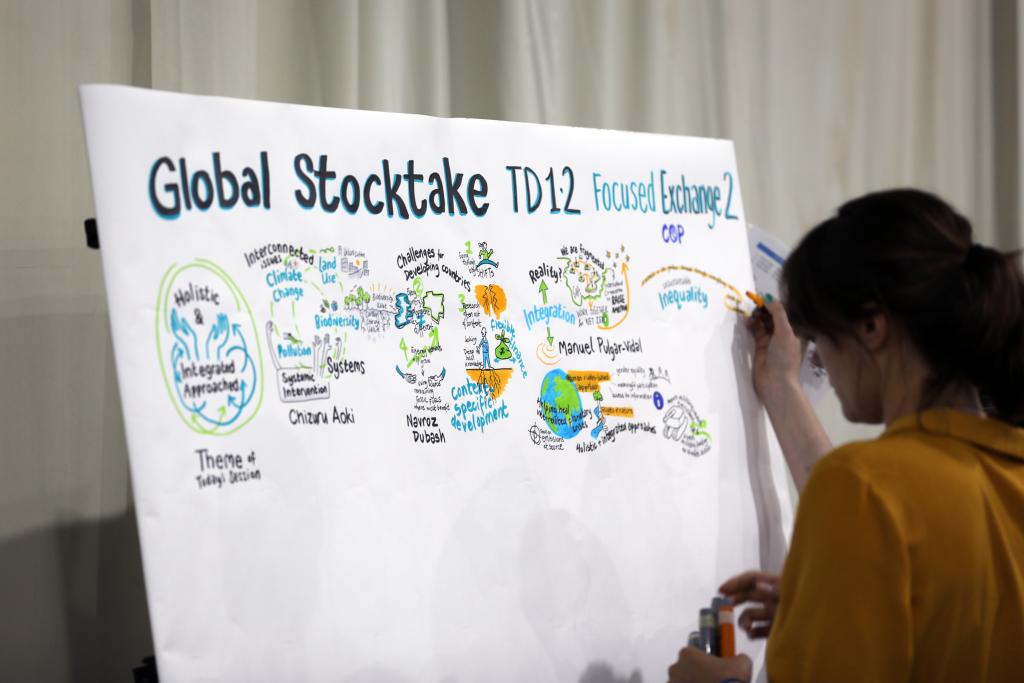
HAC or High Ambition Coalition: An informal group convened in 2014 by Marshall Islands with the aim to ensure that what would become the Paris Agreement was as ambitious as possible. The HAC is not a negotiating group, but it issues joint statements, convenes press conferences, and liaises with other countries to broker agreements in the negotiations. (more info)
High-Level Climate Champions: Each COP Presidency appoints such a Champion to spearhead non-state actor engagement in the implementation of the Paris Agreement. At any given time, two High-Level Champions support the Marrakech Partnership for Global Climate Action. (more info)
High-level segment: The part of a meeting during which the heads of state and ministers make statements.
HoD or Head of Delegation: The person that leads a delegation. When progress is slow or stalled at the technical level, the Presidency typically ends up convening individual meetings at the HoD level to try to reach an agreement.
Huddle: A group of people that come together in a circle to informally discuss something, such as a coalition’s common position or a proposal that could bridge different groups’ positions.
I to L
Implementation: Taking the necessary actions to accomplish something.
INF doc or Information document: A non-negotiation document that is usually published before a meeting to provide background information.
Informal consultations: A group established to conduct negotiations on a specific agenda item or sub-item. All parties may attend and unless a party objects, the meetings are also open to observers. In the past, this was rarely the case, but for the past few years, the vast majority of informal consultations in climate meetings have been open to observers. Informal consultations are led by two Co-Facilitators, one from a developing country and one from a developed country. If there is also a contact group convened for the agenda item, the Co-Facilitators will be the same people that co-chair the contact group discussions.
Informal note: A type of document that aims to support the negotiation process. Oftentimes, the Co-Facilitators of negotiations on a given agenda item will prepare an informal note under their own authority to capture progress in the negotiations.
Informal-informals: Negotiation format that is even more informal than informal consultations, is restricted to parties, and where Co-Facilitators only have a role to play at the parties’ request. Parties report back on progress made in informal-informals when discussions reconvene in a more formal setting.
Interpretation: Simultaneous oral translation of statements made during meetings. Typically, this is only available for plenary sessions and only for the official languages of the UN, which are Arabic, Chinese, English, French, Russian, and Spanish. Participants need to use headsets, which they grab from tables at the back of the plenary room, to access the different interpretation channels. The quality of the interpretation varies. In some instances, negotiators will signal when their statements are misrepresented through the interpretation.
IPCC or Intergovernmental Panel on Climate Change: A science-policy body jointly established by the WMO and UNEP in 1998 to provide decision-makers with policy-relevant but not policy-prescriptive scientific information that supports the development of climate action. The IPCC publishes assessment reports for which experts volunteer their time to assess thousands of scientific papers and provide a comprehensive analysis of what is known about the drivers of climate change, its impacts and future risks, and how adaptation and mitigation can reduce those risks. (more info)
IPLCs or Indigenous Peoples and Local Communities: A term used in multilateral environmental governance to refer to people and groups who self-identify as Indigenous or members of distinct local communities. There are debates around the conflation of Indigenous Peoples, who have distinct rights, with local communities.
IPO or Indigenous Peoples Organizations: One of the UNFCCC’s nine observer constituencies.
Iteration: A revised version of a document.
ITMO or Internationally Transferred Mitigation Outcome: A label for the emission reduction units transferred between parties cooperating under Paris Agreement Article 6.2.
JI or Joint Implementation: A mechanism established under the Kyoto Protocol that allows Annex B countries to earn emission reduction credits from emission-reduction projects in another Annex B country. (more info)
Joint item: An item jointly considered by two bodies, such as both Subsidiary Bodies.
JTWP or Just Transition Work Programme: Established in 2022 to foster discussion of pathways to achieving the goals of the Paris Agreement outlined in Article 2.1 (on temperature limits, adaptive capacity, and finance flow alignment), in the context of Article 2.2 (on equity and the principle of CBDR-RC, in light of different national circumstances.).
KCI or Katowice Committee of Experts on the Impacts of the Implementation of Response Measures: The constituted body that supports the work on response measures. It addresses issues related to economic diversification and transformation; just transition of the workforce and creation of decent work and quality jobs; assessing and analyzing the impacts of the implementation of response measures; and facilitating and building capacity on the identification, development, customization, and use of tools and methodologies to assess the impacts of the implementation of response measures. (more info)
KP or Kyoto Protocol: The protocol that operationalizes the UNFCCC by committing 37 industrialized countries and countries with economies in transition to limit and reduce GHG emissions in accordance with agreed individual targets. It was adopted in 1997 and entered into force in 2005. For the KP’s first commitment period (2008–2012), these targets added up to an average 5% emission reduction compared to 1990 levels. In 2012, parties adopted the Doha Amendment that defined a second commitment period for 2013–2020. The amendment only entered into force on December 31, 2020, the last day of the commitment period. During the second commitment period, parties committed to reducing GHG emissions by at least 18% below 1990 levels. (more info)
L docs: A document format in which draft decisions are published.
LCIPP or Local Communities and Indigenous Peoples Platform: Established in 2015, the Platform has three functions: promoting knowledge exchange; building capacity to support IPLCs in engaging in the UNFCCC process and support parties and other stakeholders in engaging with IPLC; and facilitating the integration of diverse knowledge systems, practices, and innovations in the design and implementation of climate action. (more info)
LDCs or Least developed countries: One of the negotiation blocks in the climate negotiations; also one of the groups of countries that get special recognition in the climate process and are provided with flexibility to implement certain commitments, such as reporting requirements. The LDCs are a group of countries that the UN recognizes as being in a situation of underdevelopment based on criteria such as per capita income, school enrolment, nutrition levels, and economic and environmental vulnerability. The list of LDCs is reviewed every 3 years and, over time, seven countries have graduated from their previous status as an LDC. There are currently 45 LDCs: Afghanistan, Angola, Bangladesh, Benin, Burkina Faso, Burundi, Cambodia, Central African Republic, Chad, Comoros, the Democratic Republic of the Congo, Djibouti, Eritrea, Ethiopia, Gambia, Guinea, Guinea-Bissau, Haiti, Kiribati, Lao People’s Democratic Republic, Lesotho, Liberia, Madagascar, Malawi, Mali, Mauritania, Mozambique, Myanmar, Niger, Nepal, Rwanda, Saõ Tomé and Príncipe, Senegal, Sierra Leone, Solomon Islands, Somalia, South Sudan, Sudan, Tanzania, Timor-Leste, Togo, Tuvalu, Uganda, Yemen, and Zambia. (more information)
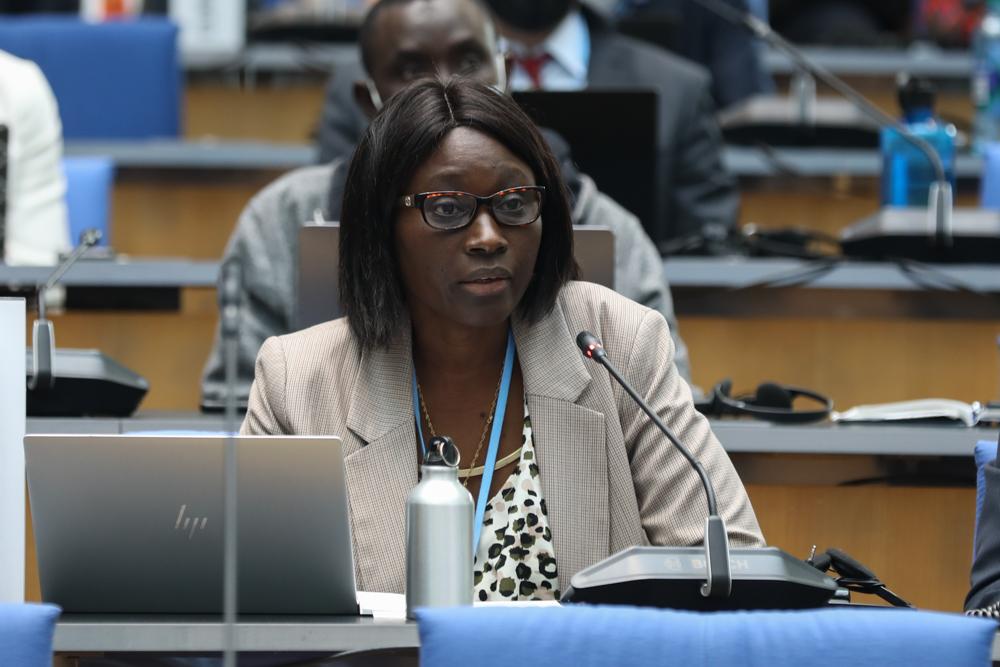
LDCF or Least Developed Countries Fund: Established in 2001 by the COP to specifically assist LDCs in undertaking adaptation action. The LDCF is operated by the GEF and now also serves the Paris Agreement. (more info)
LEG or Least Developed Countries Expert Group: A constituted body established in 2001 to provide technical guidance and support to LDCs, especially in the formulation and implementation of national adaptation plans. (more info)
LGMA or Local Governments and Municipal Authorities: One of the UNFCCC’s nine observer constituencies.
Lima Work Programme on Gender: The UNFCCC’s workstream on matters related to gender. It was complemented in 2017 by the adoption of the first gender action plan, which defined activities to advance women’s full, equal, and meaningful participation in the UNFCCC and promote gender-responsive climate policy and the mainstreaming of a gender perspective in implementing the UNFCCC. In 2019, parties adopted the 5-year Enhanced Lima Work Programme on Gender and its gender action plan, which will be reviewed in 2024. While there has been progress on gender-related issues, gaps remain. Only 50% of NDCs include gender-related adaptation actions. On average, women occupied 38% of constituted body positions in 2023. At COP 27, women represented 37% of party delegates and 29% of heads and deputy heads of delegation. (more info)
LLDCs or Landlocked Developing Countries: One of the coalitions through which countries make joint statements in the climate negotiations, although such joint statements are relatively rare. Its members are Afghanistan, Armenia, Azerbaijan, Bhutan, Bolivia, Botswana, Burkina Faso, Burundi, Central African Republic, Chad, Eswatini, Ethiopia, Kazakhstan, Kyrgyzstan, Lao People’s Democratic Republic, Lesotho, North Macedonia, Malawi, Mali, Mongolia, Nepal, Niger, Paraguay, Moldova, Rwanda, South Sudan, Tajikistan, Turkmenistan, Uganda, Uzbekistan, Zambia, and Zimbabwe.
LMDCs or Like-Minded Developing Countries: One of the negotiation blocks in the climate negotiations. The coalition does not have a (publicly available) formal list of members, but includes countries such as Algeria, Bolivia, China, Ecuador, Egypt, India, Iran, Malaysia, Nicaragua, Pakistan, Qatar, Saudi Arabia, Venezuela, and Vietnam.
Loss and Damage: Climate change impacts that are not or cannot be avoided through mitigation and adaptation. Within the UNFCCC, there are a number of workstreams and constituted bodies that address matters related to loss and damage, including the Warsaw International Mechanism, Santiago Network, and a dedicated fund that is currently being operationalized. (more info)
LULUCF or Land use, land-use change, and forestry: Jointly considered as a sector to address in climate change mitigation. (more info)
M to P
Mainstreaming: Ensuring that an issue is always taken into account in broader decision-making processes and activities. A key endeavor for climate policy is gender mainstreaming.
Maladaptation: Action intended to enhance climate resilience which inadvertently increases vulnerability, including in geographical regions and communities not directly targeted by the intervention or with negative side effects manifesting with a temporal delay.
Mandate: The purview of a person, meeting, or negotiation group. The scope of things they are supposed to address.
Mandated Events: Events such as workshops and high-level roundtables whose conduct has been decided in previous decisions. The number of mandated events in the climate process has drastically increased in the past few years.
Market-based mechanisms: Approach whereby emission rights or certified emission reductions are traded between countries or other types of actors. Examples include emissions trading systems, the Joint Implementation mechanism and the Clean Development Mechanism (CDM) established under the Kyoto Protocol, and the mechanisms established under the Paris Agreement’s article 6.2 and 6.4. (more info)
Marrakech Partnership for Global Climate Action: Framework that supports non-state actor engagement in the implementation of the Paris Agreement. A key objective is to ensure greater accountability of voluntary initiatives. (more info)
Mitigation: Efforts aimed at reducing GHG emissions and enhancing GHG sequestration. Key aspect of climate action. There are a number of processes and workstreams that address matters related to mitigation. (more info)
MoI or Means of implementation: Phrase that refers to finance, technology transfer, and capacity building.
MoU or Memorandum of Understanding: Document that lays out the modalities for cooperation between two or more organizations.
MRV or Measurement, reporting, and verification: Key elements of transparency provisions under the UNFCCC. (more info)
Mutatis Mutandis: Latin phrase used to specify that a decision text should be copied for use in another context, applying only those changes necessary to adapt it to said context. This is the case when decisions on a given issue are adopted under different governing bodies: the CMA might adopt a decision that is substantively the same as a decision adopted by the COP, only replacing references to the UNFCCC with references to the Paris Agreement.
MWP or Mitigation ambition and implementation work programme: Workstream established in 2021 to urgently scale up mitigation ambition and implementation in this critical decade in a manner that complements the Paris Agreement’s Global Stocktake. The key features of the work programme are global dialogues and associated investment-focused events. (more info)
NAP or National adaptation plans: Document that outlines the adaptation action required and prioritized in a country for a given time frame, typically five years. In 2010, parties established a process to enable least developed countries to formulate and implement NAPs with a view to identifying medium- and long-term adaptation needs, as well as developing and implementing strategies to address those needs. Other developing countries are also invited to employ the guidelines formulated to support NAPs. Progress assessments showed that one of the key challenges for countries was accessing funding for formulating and implementing NAPs. (more info)
NCQG or New collective quantified goal on climate finance: Parties are supposed to define, prior to 2025, a new collective quantified goal on climate finance (NCQG) from a floor of USD 100 billion per year, taking into account the needs and priorities of developing countries. An ad hoc work programme was convened for that purpose, which builds on technical expert dialogues and high-level ministerial dialogues. (more info)
NDCs or Nationally determined contributions: NDCs are the climate plans that parties bring forward to implement the Paris Agreement. The Agreements stipulates that all parties shall prepare and communicate progressively more ambitious NDCs every five years and developed countries should continue taking the lead by undertaking economy-wide absolute emission reduction targets, with developing countries encouraged to move over time towards economy-wide emission reduction or limitation targets in light of different national circumstances. Research, assessments by the Intergovernmental Panel on Climate Change, and the first Global Stocktake showed that current NDCs and their level of implementation do not put the world on track to meeting the objectives of the Paris Agreement. The next round of NDCs is to be submitted by 2025. (more info)
Net zero: A state where anthropogenic CO2 or, more broadly, GHG emissions are balanced globally by removals over a specified period. Net-zero CO2 emissions is also referred to as carbon neutrality.
NMA or Non-market approaches: Type of climate action that does not involve a trade in emission reduction credits. Currently addressed in discussions related to Article 6.8 of the Paris Agreement. (more info)
Non-Annex I parties: By default all countries not listed in Annex I to the UNFCCC. (more info)
Non-paper: Informal document intended to facilitate progress in the negotiations.
NWP or Nairobi Work Programme: Workstream launched in 2005 that aims to assist parties in improving their adaptation knowledge. It, among other things, led to the development of the Adaptation Knowledge Portal. (more info)
Objection: When a delegation lodges its formal opposition to something, such as the adoption of a decision or the proposed way to conduct negotiations. Objections can be made orally or in writing.
Observer: Type of actor that can participate in a process but has no decision-making power.
OMGE or Overall mitigation in global emissions: Concept that emerged in the Article 6.4 negotiations. The idea is to cancel a portion of emission credits instead of selling them, which would ensure that the market mechanism not only serves to offset emissions but delivers an actual reduction in overall emissions.
OPEC or Organization of the Petroleum Exporting Countries: Organization enabling the co-operation of leading oil-producing countries. Sometimes issues joint statements to influence the climate negotiations.
Operative paragraph: Body/substantive part of a decision text, as opposed to the preamble/chapeau.
Package: Set of issues on which a decision has to be taken as a whole. Parties often strategically link agreement on one agenda item/issue to agreement on another as a way to push for certain trade-offs.
PAICC or Paris Agreement Implementation and Compliance Committee: Constituted body established in 2015 to facilitate implementation of, and promote compliance with, the provisions of the Paris Agreement. It shall function in a manner that is transparent, non-adversarial, and non-punitive, and paying attention to parties’ respective national capabilities and circumstances. The Committee annually reports to the CMA and its first review is scheduled for 2025. (more info)
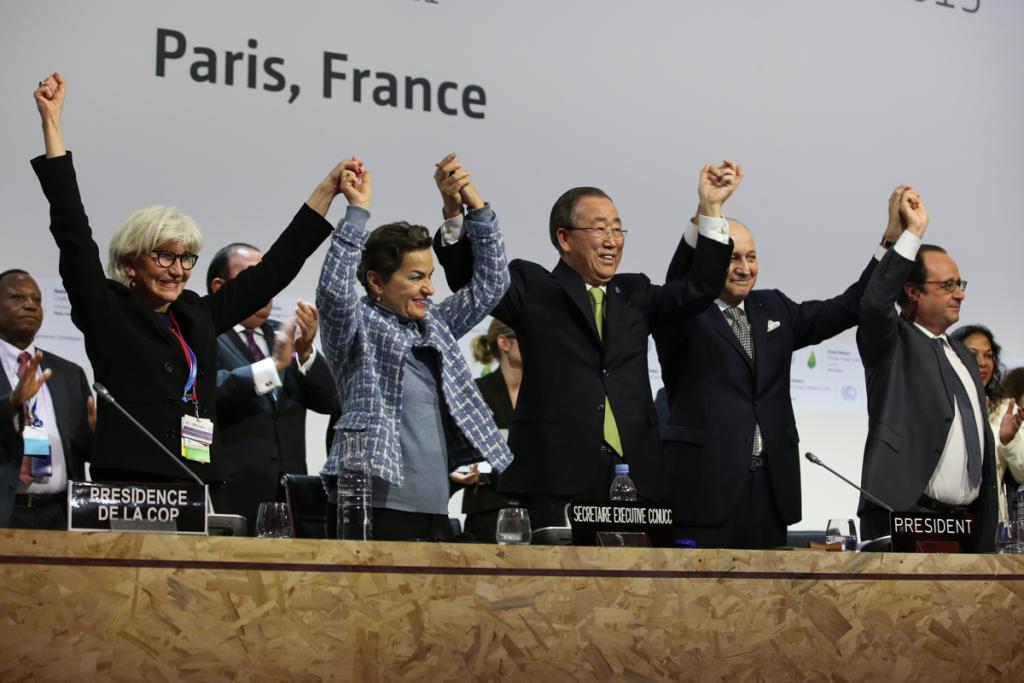
Paris Agreement: International treaty on climate change adopted in 2015. It entered into force in 2016 and has 195 parties. Its key objective is to hold the increase in the global average temperature to well below 2°C above pre-industrial levels and pursue efforts to limit the temperature increase to 1.5°C above pre-industrial levels. (more info)
Party-driven: The state of being led or shaped by parties. The UNFCCC is a party-driven process, which means parties—rather than the Presidency, Secretariat, or other officials such as contact group co-chairs—drive the process and determine the outcome of the negotiations.
Parties: The countries that ratified a specific agreement and can thus engage in decision making for its implementation.
Pavilion: Dedicated space rented by individual delegations during COP meetings. Typically, pavilions are adjacent to each other, forming a relatively continuous space in the venue.
PCCB or Paris Committee on Capacity-building: The PCCB is a constituted body established in 2015 to address current and emerging gaps and needs in implementing and further enhancing capacity building in developing countries. CMA 2 decided the PCCB shall serve the Paris Agreement, in line with its mandate and terms of reference established under the COP. COP 25 extended the PCCB until 2024 and COP 30 (November 2025) is supposed to conclude its second review and decide on the need for a further extension.
Petersberg Climate Dialogue: Annual event convened since 2010 by (and in) Germany, typically in May. Fosters discussions among high-level representatives of various governments to prepare the ground for the climate negotiations. Every year, the respective incoming COP Presidency co-hosts the event.
Placeholder: Oftentimes there are interlinkages between agenda items, so there may be elements of a draft decision prepared under one agenda item that depend on agreement found in discussions under another agenda item. In such cases, parties resort to inserting “placeholders” that will be replaced once agreement is unlocked elsewhere.
Plenary: Term that refers to both the (in principle) congregation of all conference participants and to the room in which this plenum meets.
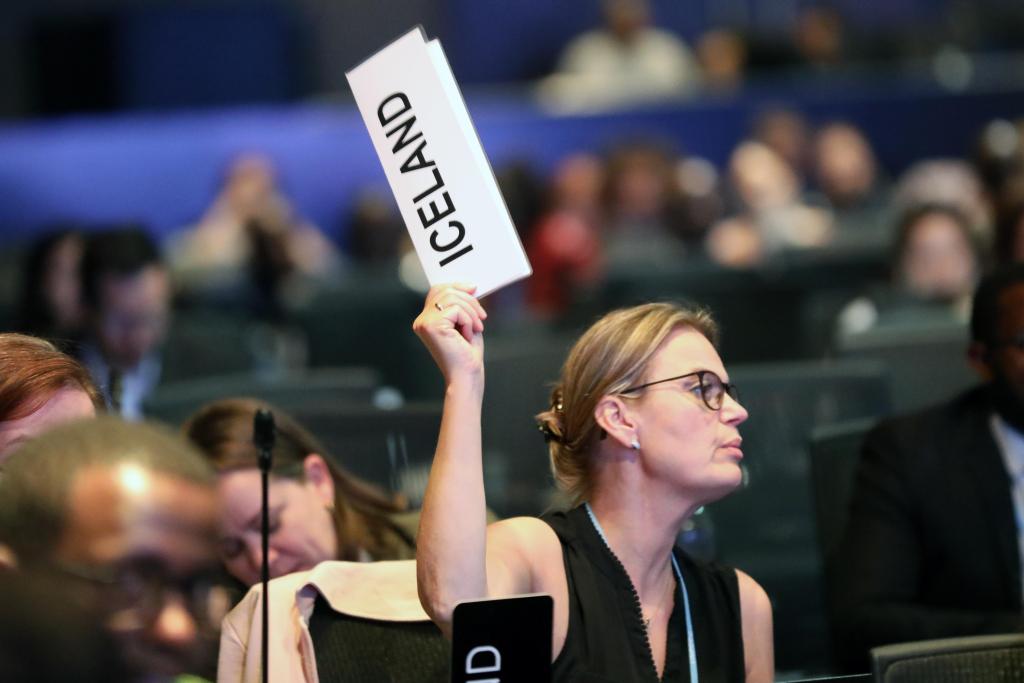
Point of order: When a delegate questions, in a specific instance, whether rules of procedures are adequately upheld. If a delegate raises a point of order, the presiding officer has to interrupt the discussion to address the matter. Delegates signal a point of order by forming a T with their forearms held up in front of them or by raising their flag high above their heads.
Preamble: Introductory provisions of a decision. It provides context, points to previous related decisions and principles, and guides the interpretation of the substantive parts/body of the text.
Pre-COP: Short meeting that provides a space for countries to exchange views ahead of the annual COP meeting. Usually takes place about four weeks before the COP. Oftentimes the pre-COP does not take place in the COP’s host country, but rather in another country in the host region.
Presidency consultations: During the second week of a COP, the Presidency usually launches more political-level discussions to make progress on thorny issues. The Presidency can for example decide to conduct consultations with negotiating coalitions or appoint ministers, one from a developing country and one from a developed countries, to co-facilitate consultations on its behalf.
Q to S
Quantum: Term used to refer to the quantitative level of the new collective quantified goal on climate finance to be defined prior to 2025.
Quorum: The minimum number of parties that has to be present during a meeting so that it can formally open and/or adopt decisions. The UNFCCC’s draft rules of procedure specify that for meetings of the governing and subsidiary bodies, the quorum required to declare a meeting open and permit debate to proceed is at least one-third of the parties to the UNFCCC, the Kyoto Protocol, or the Paris Agreement. Subsequently, the presence of two-thirds of the respective parties are required for any decision to be taken. Ensuring quorum is met can become a challenge when the meeting goes over time, since some delegations might no longer be present.
Rapporteur: Member of the Bureau in charge of preparing the report of the meeting.
Ratification: Process through which a government becomes a party to an agreement and becomes bound by its provisions. The ratification process differs among countries, in some it is up to the executive while in others a parliamentary decision is needed.
Red line: Issue on which a delegation is not willing to comprise on.
Response measures: Within the climate change negotiations, discussions on “response measures” address the side-effects of climate action, mainly in terms of negative side-effects of mitigation measures.
RINGO or Research and independent NGOs: One of the UNFCCC’s nine observer constituencies. (more info)
RSO or Research and Systematic Observation: This is the SBSTA agenda item related to science. Research is usually considered in June and systematic observation is addressed in November-December. (more info)
Rule 16: Element of the UNFCCC’s draft rules of procedure that specifies that any item of the agenda of an ordinary session, whose consideration has not been completed at the session, shall be automatically included in the agenda of the next ordinary session, unless otherwise decided by the COP. This means that Rule 16 is applied when delegates cannot reach agreement. Its application is thus a sign of stalemate in the negotiations.
Rules of Procedure: Set of rules that govern how a process is conducted and decisions are made. Parties to the UNFCCC were supposed to adopt their rules of procedure at COP 1, but could not agree on the matter of voting. Up until now, parties start every meeting by agreeing to apply the draft rules of procedure from 1995 with the exception of rule 42 on voting.
Santiago Network: Established in 2019, the Network is the “implementation arm” of the WIM and aims to catalyze demand-driven technical assistance for the implementation of relevant approaches to averting, minimizing, and addressing loss and damage in developing countries that are particularly vulnerable to the adverse effects of climate change. The ToRs for the Network were adopted in 2022 and the host for the Network’s Secretariat was identified in 2023. (more info)
SBI or Subsidiary Body for Implementation: The SBI is one of two permanent Subsidiary Bodies to the UNFCCC. It supports the work of the COP, CMP, and CMA through the provision of information and recommendations on the implementation of the UNFCCC, Kyoto Protocol, Paris Agreement and their related work programmes. The SBI adopts conclusions and recommends draft decisions for consideration and adoption by the governing bodies. The Subsidiary Bodies meet twice a year, once in a smaller, dedicated meeting in June in Bonn, Germany, and once in the context of the larger meeting of the COP, CMP, and CMA in November-December. (more info)
SBSTA or Subsidiary Body for Scientific and Technological Advice: The SBSTA is one of two permanent Subsidiary Bodies to the UNFCCC. It supports the work of the COP, CMP, and CMA through the provision of information and recommendations on scientific and technological matters. The SBSTA adopts conclusions and recommends draft decisions for consideration and adoption by the governing bodies. The Subsidiary Bodies meet twice a year, once in a smaller, dedicated meeting in June in Bonn, Germany, and once in the context of the larger meeting of the COP, CMP, and CMA in November-December. (more info)
SCCF or Special Climate Change Fund: Established in 2001 by the COP to finance activities in developing countries related to: adaptation; technology transfer; energy, transport, industry, agriculture, forestry and waste management; and economic diversification. The SCCF is operated by the GEF and now also serves the Paris Agreement. (more info)
Scenario note: Document in which the Chairs of the Subsidiary Bodies lay out their expectations regarding the conduct of negotiations.
SCF or Standing Committee on Finance: Constituted body established in 2010 to improve coherence and coordination in the delivery of climate finance, mobilize financial resources, rationalize the Financial Mechanism, and assist with measuring, reporting, and verifying the support provided to developing countries. Among other things, the SCF prepares draft guidance to the Green Climate Fund and the Global Environment Facility. The idea is that this helps speed up the process: instead of starting from scratch and spending valuable face-to-face time collecting views, parties use the draft guidance as a basis for their negotiations. (more info)
Secretariat: The Secretariat facilitates the intergovernmental climate change negotiations. It provides technical expertise, engages in communication work, and supports the bodies that serve to enhance the implementation of the UNFCCC, Kyoto Protocol, and Paris Agreement. The Secretariat is located in Bonn, Germany, and employs over 400 staff members. (more info)
Side event: Relatively short issue-specific panel discussion type of events, which can be organized by a variety of organizations, including non-state actors. The UNFCCC Secretariat grants organizations slots for side events, free of charge. Due to high demand, not all requests can be accommodated. Some side events also take place in so-called pavilions, which are not administered by the Secretariat. (more info)

SIDS or Small island developing states: One of the groups of countries that get special recognition in the climate process and are provided with flexibility to implement certain commitments, such as reporting requirements. Its members are: Antigua and Barbuda, Bahamas, Barbados, Belize, Cabo Verde, Comoros, Cook Islands, Cuba, Dominica, Dominican Republic, Fiji, Grenada, Guinea-Bissau, Guyana, Haiti, Jamaica, Kiribati, Maldives, Marshall Islands, Mauritius, Federated States of Micronesia, Nauru, Niue, Palau, Papua New Guinea, Saint Kitts and Nevis, Saint Lucia, Saint Vincent and the Grenadines, Samoa, São Tomé and Príncipe, Singapore, Seychelles, Solomon Islands, Suriname, Timor-Leste, Tonga, Trinidad and Tobago, Tuvalu, and Vanuatu. (more info)
Speakers’ list: List of delegates that ask for the floor during a specific meeting. The list is maintained by the presiding officer. Delegates are taken up on a first-come-first-served basis in the order in which they make their requests. Delegations who have yet to take the floor are usually taken up before others can make a repeat statement. At some point towards the end of the meeting, the presiding officer announces they will “close the list of speakers” to give delegates a last chance to ask for the floor before the list closes. If time runs out before all speakers on the list can take the floor, the next session will resume with the outstanding statements from the previous session’s list of speakers.
Stakeholder: Actor with an interest in a given matter.
Stocktaking plenary: During the second week of a COP, the Presidency typically convenes such plenaries to provide all delegates an overview of progress made across negotiation items and provide an indication of the next steps in the process. It is a practice that helps deliver transparency and maintain trust.
Submissions: To pave the way for the negotiations and make the best use of limited face-to-face time, the Secretariat is often tasked with compiling submissions on parties’ and other stakeholders’ views of certain issues. These can be ideas for topics to address in specific workshops and dialogues, or elements for inclusion in draft decisions. The Earth Negotiations Bulletin has compiled a database of current calls for submissions. (more info)
Subsidiary Bodies: The UNFCCC has two permanent Subsidiary Bodies that support the work of the COP, CMP, and CMA: one focused on scientific and technological advice (SBSTA) and one focused on implementation (SBI). The Subsidiary Bodies meet twice a year, once in a smaller, dedicated meeting in June in Bonn, Germany, and once in the context of the larger meeting of the COP, CMP, and CMA in November-December.
T to Z
Taking the floor: Making a statement during a meeting. Delegates have to signal their wish to take the floor, either by pressing a button on their respective microphone or by holding up their flag/plastic tag featuring their delegation’s name.
TEC or Technology Executive Committee: Policy arm of the UNFCCC’s Technology Mechanism. Consists of a group of experts that meets at least twice a year to provide policy recommendations aimed at enhancing climate technology development and transfer. (more info)
TED or Technical Expert Dialogue: Discussion series convened under the ad hoc work programme on the new collective quantified goal on climate finance. (more info)
TM or Technology Mechanism: Established in 2010, the Mechanism’s purpose is to facilitate enhanced action on technology development and transfer to developing countries in support of climate change mitigation and adaptation. It consists of the Technology Executive Committee and the Climate Technology Center and Network.
To align yourself with: Phrase used by delegates to associate themselves with a previous statement. It signals support for another delegation’s position, without necessarily clarifying exactly which points of that delegation’s position are supported.
Transparency: Refers to the reporting provisions in the climate change process. (more info)
Troika: Group of three. The United Arab Emirates, Azerbaijan, and Brazil, as the Presidencies of the UNFCCC’s COP 28, COP 29, and COP 30, decided to form a troika to facilitate continuity in the negotiations.
TUNGO or Trade Union NGOs: One of the UNFCCC’s nine observer constituencies.
Umbrella Group: One of the negotiation blocks in the climate negotiations. The Group is made up of Australia, Canada, Iceland, Israel, Japan, Kazakhstan, New Zealand, Norway, Ukraine, the US, and, since 2023, the UK. The Russian Federation and Belarus were members of the coalition until 2022.
UNFCCC or UN Framework Convention on Climate Change: The UNFCCC, through which countries coordinate the global response to climate change, was adopted in 1992 and entered into force in 1994. It has 198 parties. The objective of the UNFCCC is to stabilize greenhouse gas concentrations at a level that would prevent dangerous anthropogenic interference with the climate system, whereby such a level should be achieved within a time-frame sufficient to allow ecosystems to adapt naturally to climate change, to ensure that food production is not threatened, and to enable economic development to proceed in a sustainable manner. The governing body of the UNFCCC is its Conference of the Parties (COP, also called the UN Conference on Climate Change), which meets once a year in November-December. (more info)
UNSG or UN Secretary-General: The UN Secretary General is the head of the UN. UNSGs use their power to mobilize commitment towards climate action. In his UNSG position, António Guterres has, for example, convened several Climate Summits at UN headquarters and also makes regular appearances at UNFCCC meetings.
USD 100 billion commitment: Developed countries committed themselves to jointly mobilize USD 100 billion per year by 2020 for climate action in developing countries. The goal was not met in 2020 and 2021. Preliminary data indicates it was met in 2022. (more info)
Venue: The delimited perimeter in which the conference takes place and to which access is restricted.
Verbatim: Latin phrase that means “word-for-word.”
Vienna Setting: Negotiation format in which a limited number of representatives conduct negotiations on behalf of their coalitions.
WEOG or Western European and Others Group: One of the UNFCCC regions among which the COP Presidency rotates. It is not a negotiation coalition. It covers: Andorra, Australia, Austria, Belgium, Canada, Denmark, Finland, France, Germany, Greece, Iceland, Ireland, Israel, Italy, Lichtenstein, Luxembourg, Malta, Monaco, the Netherlands, New Zealand, Norway, Portugal, San Marino, Spain, Sweden, Switzerland, Türkiye, the UK, and the US.
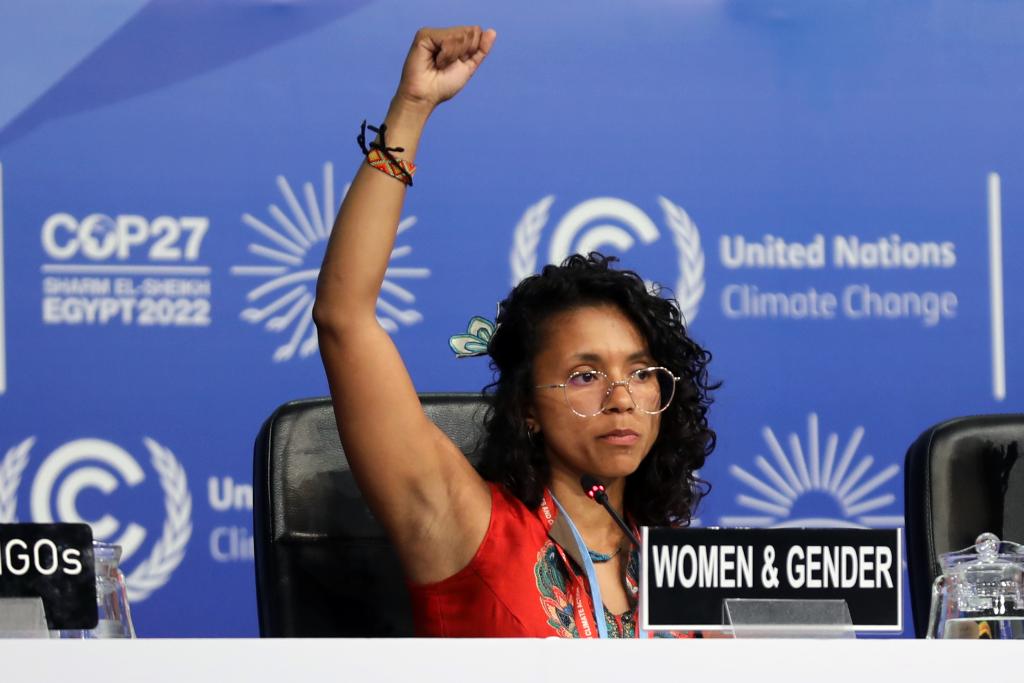
WGC or Women and Gender Constituency: One of the UNFCCC’s nine observer constituencies.
WIM or Warsaw International Mechanism for Loss and Damage: Established in 2013, the WIM aims to assist developing countries that are particularly vulnerable to the adverse effects of climate change by: enhancing knowledge and understanding of comprehensive risk management approaches to address loss and damage; strengthening dialogue, coordination, coherence, and synergies among relevant stakeholders; and enhancing action and support, including finance, technology and capacity-building. (more info)
WIM ExCom or Executive Committee of the Warsaw International Mechanism for Loss and Damage: The constituted body tasked with implementing the functions of the WIM, with the support of thematic expert groups. (more info)
YOUNGO or Youth NGOs: One of the UNFCCC’s nine observer constituencies.
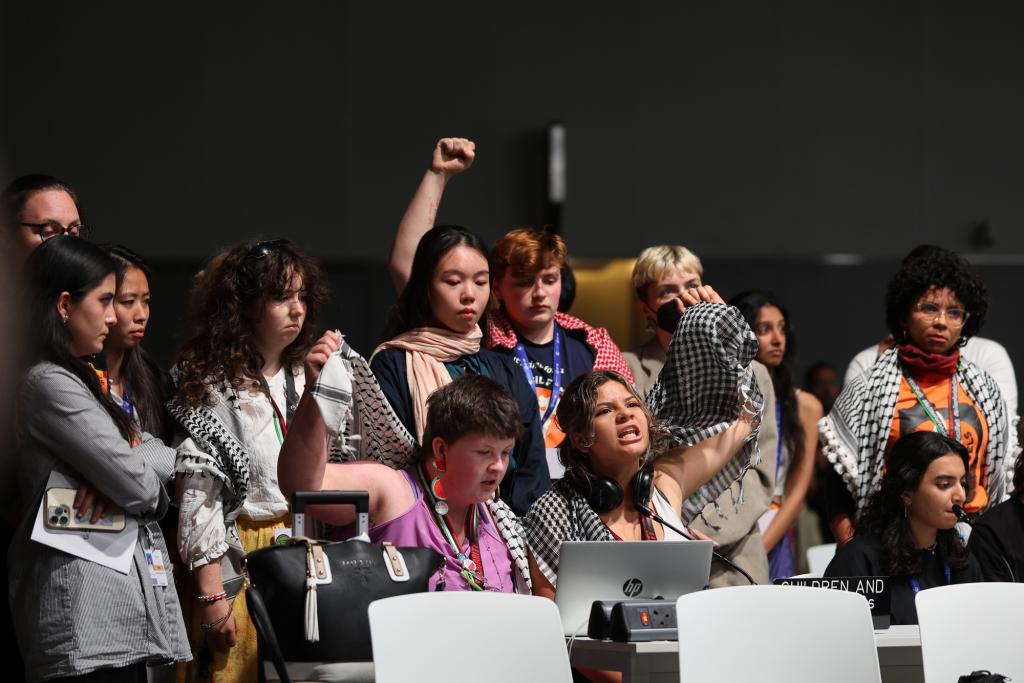
Funded by
You might also be interested in
UNFCCC Submissions Tracker
Tracking and sharing opportunities for stakeholders to give input to the UN climate change negotiations.
The State of Global Environmental Governance 2023
In global environmental talks in 2023, the focus across nearly all issue areas was funding implementation and reviewing performance.
Lessons Learned at COP 28
Two newcomers to climate negotiations reflect on their COP 28 experiences—surprises, insights, and what they'll look for at the next UNFCCC talks.
On Behalf of My Delegation (Second Edition)
This backpacker’s guide to the world of climate change negotiations sums up key challenges faced by negotiators and ways to overcome these problems.
